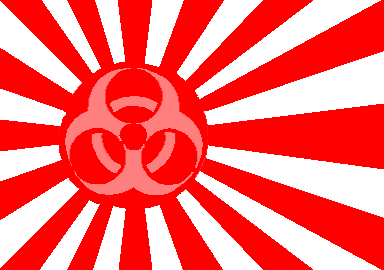

1925 -- Geneva Convention governing wartime conduct bans biological weapons. Japan refuses to approve treaty.
1932 -- Japanese troops invade Manchuria. Shiro Ishii, a physician and army officer who was intrigued by germ warfare, begins preliminary experiments.
1936 -- Unit 731, a biological-warfare unit disguised as a water-purification unit, is formed. Ishii builds huge compound -- more than 150 buildings over six square kilometers -- outside the city of Harbin. Some 9,000 test subjects, which Ishii and his peers called ''logs,'' eventually die at the compound.
1942 -- Ishii begins field tests of germ warfare on Chinese soldiers and civilians. Tens of thousands die of bubonic plague, cholera, anthrax and other diseases. U.S. soldiers captured in Philippines are sent to Manchuria.
1945 -- Japanese troops blow up the headquarters of Unit 731 in final days of Pacific war. Ishii orders 150 remaining ''logs'' killed to cover up their experimentation. Gen. Douglas MacArthur is named commander of the Allied powers in Japan.
1946 -- U.S. coverup of secret deal with Ishii and Unit 731 leaders -- germ warfare data based on human experimentation in exchange for immunity from war-crimes prosecution -- begins in earnest. Deal is concluded two years later.
1981 -- John Powell, a former publisher of a Shanghai magazine who was unsuccessfully tried for sedition in the early 1950s after accusing the United States of using germ warfare in Korea, exposes immunity deal in the Bulletin of Atomic Scientists.
1985 -- Dr. Murray Sanders, a former lieutenant colonel who was a U.S. adviser on biological warfare, claims that he persuaded MacArthur to approve the immunity deal in the fall of 1945.
1986 -- Congressional subcommittee holds one-day hearing in Washington, called by Rep. Pat Williams of Montana, aimed at determining whether U.S. prisoners of war in Manchuria were victims of germ-warfare experimentation. Hearing is inconclusive.
Sources: ''Factories of Death,'' by Sheldon H. Harris (Routledge, 1994); and ''Prisoners of the Japanese:
POWS of World War II in the Pacific,'' by Gavan Daws (William Morrow, 1994).
News provided by Global Alliance for Preserving the History of World War II in Asia